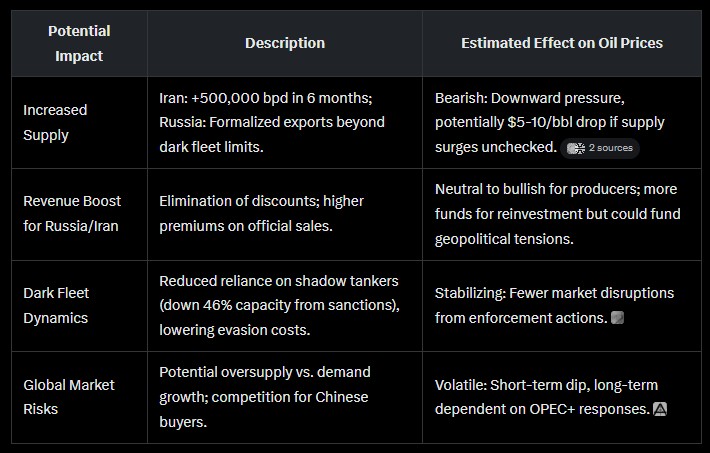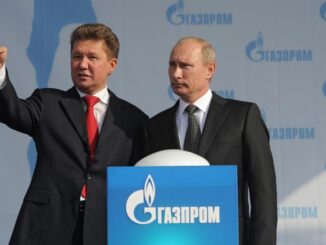
In a high-stakes diplomatic rendezvous set against the backdrop of Trump’s Scottish golf resort in Turnberry, US President Donald Trump and European Commission President Ursula von der Leyen are scheduled to convene today at 4:30 p.m. local time. The meeting aims to hammer out a trade agreement that could avert impending 30% tariffs on EU exports to the US, slated for implementation by Friday if negotiations falter. With months of shuttle diplomacy culminating in this pivotal encounter, the fate of the deal now largely rests on Trump’s verdict, injecting uncertainty into global trade dynamics and energy markets alike.
This urgency stems from broader US trade recalibrations under Trump’s second term, where reciprocal tariffs have been wielded as leverage to secure bilateral pacts. While the EU-US talks have not explicitly delved into energy specifics in public disclosures, the implications for oil and gas trade are profound. Europe’s reliance on diversified energy imports, amid ongoing geopolitical tensions, could be influenced by any tariff adjustments or concessions on liquefied natural gas (LNG) and crude oil flows.
Updates on the US-China Trade Deal: A Stabilizing Force Amid Tariff Pressures
Parallel to the EU negotiations, the US has made strides in its trade relations with China, finalizing a deal in June 2025 that maintains a 20% tariff on certain goods while resolving key issues like rare earth mineral licensing.
This agreement, announced as “done” by Trump on June 27, includes provisions to expedite US access to Chinese rare earths, critical for energy transition technologies such as electric vehicles and wind turbines.
The pact leaves steel and aluminum tariffs unresolved, with potential escalations to 50% averted through extensions of a 90-day tariff pause that expired on July 9.
From an energy perspective, this deal could indirectly bolster global oil stability by reducing trade war escalations that might disrupt supply chains. China, the world’s largest oil importer, has benefited from discounted Russian and Iranian crude via shadow networks, but formalized US-China ties might encourage Beijing to diversify sources, potentially easing pressure on sanctioned flows.
Trump’s Stance on Lifting Sanctions on Russian and Iranian Oil: Signals of Easing EmergePresident Trump has shown openness to easing sanctions on Iranian oil, signaling in June that relaxed enforcement could provide Tehran with funds to “put the country into shape” as part of broader Middle East rebuilding efforts.
This olive branch, extended alongside sanction relief on Syria in May, suggests a pragmatic shift from his first-term “maximum pressure” campaign.
For Russia, the White House has explored plans for potential sanctions relief since March, though no comprehensive lift has occurred, and new restrictions on Moscow’s energy sector remain under consideration.
Trump has not imposed fresh sanctions on Russia this year, allowing continued access to funds and materials despite the Ukraine conflict.
However, enforcement of Iranian oil sanctions in 2025 differs from 2019, with analysts noting that full reimposition might have minimal market disruption due to entrenched evasion tactics.
Instead of outright lifts, the administration could issue broad general licenses for Russian dealings, balancing geopolitical leverage with energy market stability.
Impacts on Oil Markets: More Supply, Lower Prices, and Revenue Boosts for Sanctioned Nations
Lifting or easing US sanctions on Russian and Iranian oil would inject additional supply into global markets, potentially exerting downward pressure on prices. Iran’s production could ramp up by 500,000 barrels per day (bpd) within six months of relief, flooding markets and challenging Chinese independent “teapot” refineries that have thrived on discounted sanctioned crude.
For Russia, reduced enforcement could formalize exports currently routed through the “dark fleet”—a network of aging, uninsured tankers that has successfully evaded Western price caps, sustaining Moscow’s revenues despite sanctions.
The dark fleet’s success has already mitigated the impacts of sanctions, with Russia and Iran continuing to export at discounted rates while maintaining their volumes. Formal lifting would eliminate these discounts, channeling more revenue to both nations, potentially billions in additional funds for Russia to fuel its economy and military, and for Iran to rebuild infrastructure.
However, this increased efficiency might not drastically lower prices if demand remains robust; instead, it could stabilize markets by reducing risks associated with shadow shipping, such as environmental hazards from unregulated tankers.
In contrast, tightened sanctions have historically driven prices up by constraining supply, as seen with recent US actions on Russia and Iran.

Yet, the dark fleet’s resilience—facilitating unauthorized trade amid rising crude prices—underscores that full lifts might not cause chaos but rather a recalibration toward cheaper, more abundant oil. The question remains about their ability to produce more. Are they maxed out with the investment in drilling programs, having been lowered over the last several years?
As Trump and von der Leyen tee off negotiations, the energy sector watches closely. A EU-US deal could mirror the China pact’s stability, while sanction decisions on Russia and Iran hold the key to oil’s next price pivot. In this flux, one thing is clear: Trump’s trade playbook is reshaping global energy flows, one bilateral handshake at a time.
Is Oil & Gas Right for Your Portfolio?
Crude Oil, LNG, Jet Fuel price quote
ENB Top News
ENB
Energy Dashboard
ENB Podcast
ENB Substack






